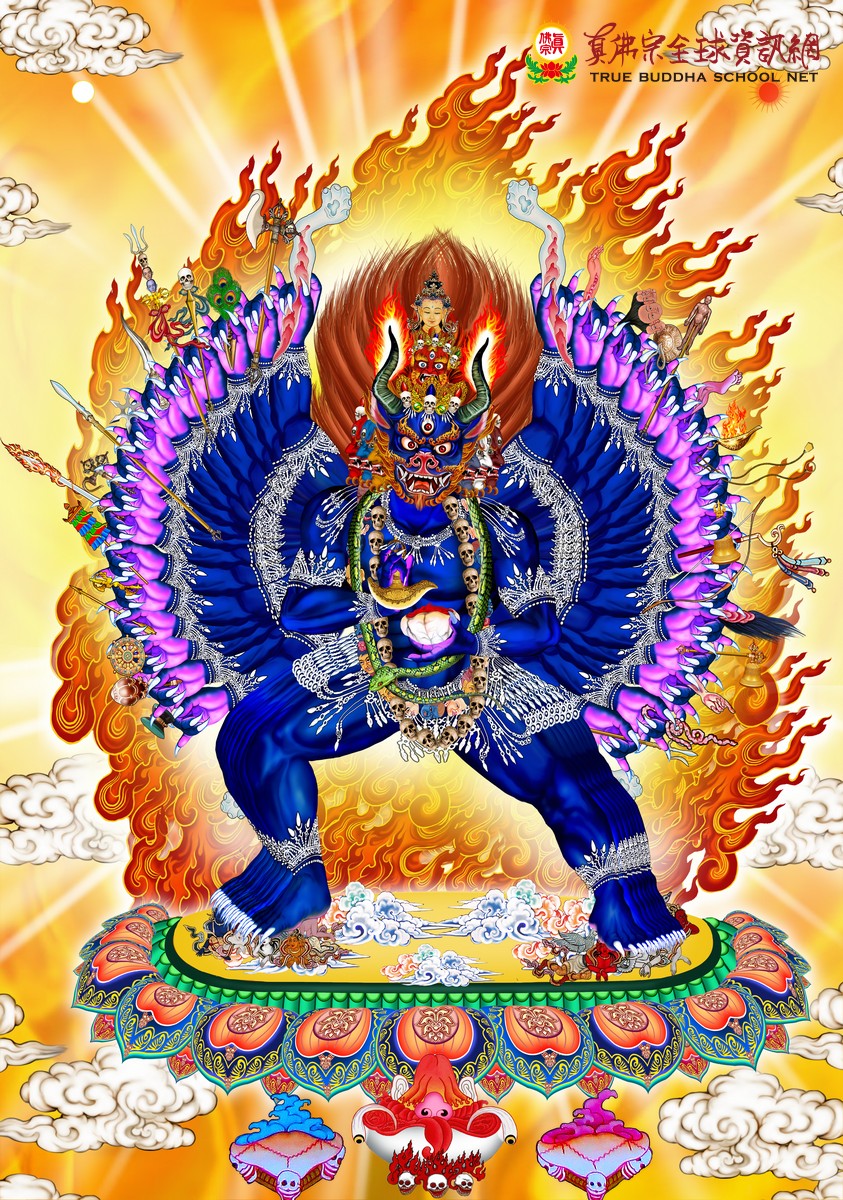On Sunday, Jul. 28, 2023, 3:00 PM, at Rainbow Temple, True Buddha School Dharma King Living Buddha Lian-sheng Sheng-yen Lu will preside over a Yamantaka Homa Ceremony, discourse Vimalakirti Sutra, and bestow empowerment for Yamantaka Uncommon Practice. (Live Webcast Link: TBD.)
【Yamantaka Mudra :】
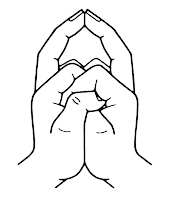
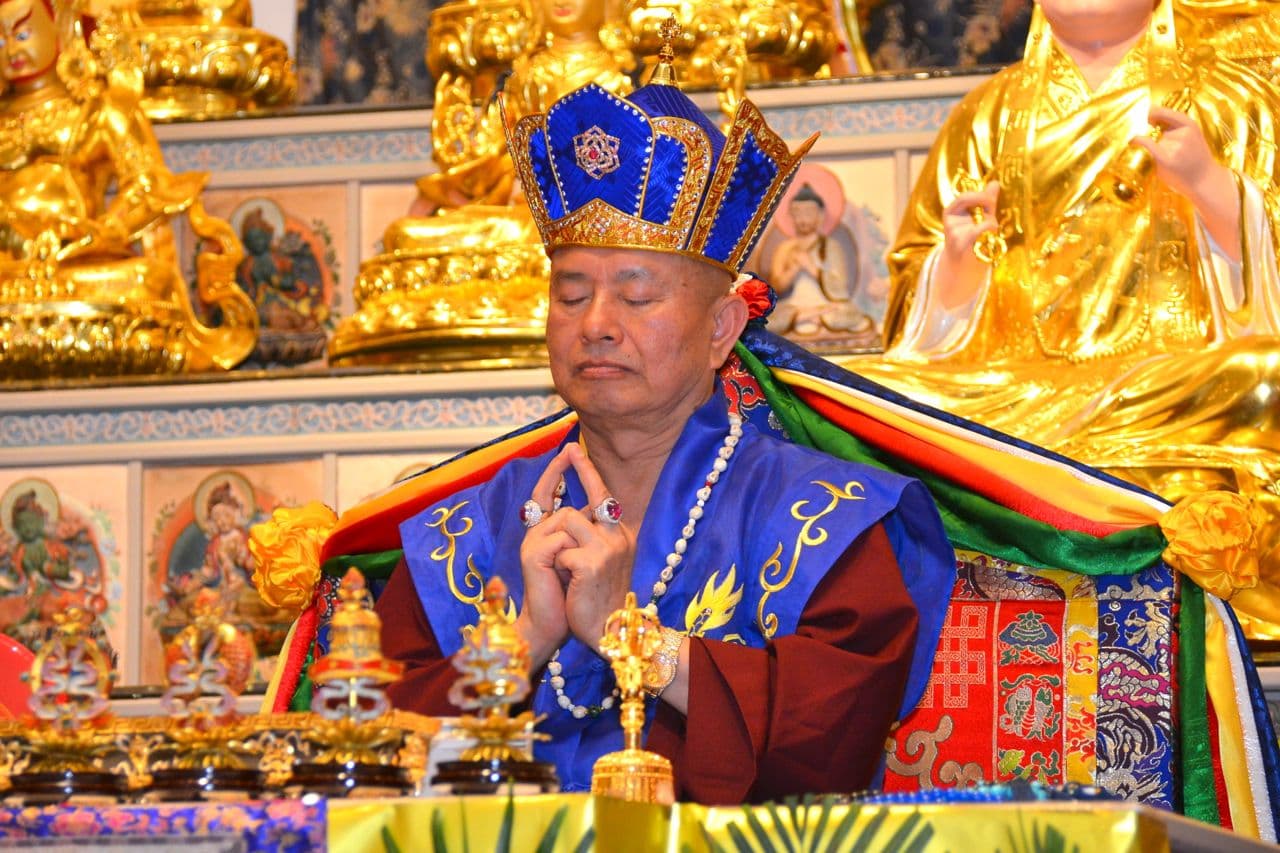
Interlace fingers inward and straighten both middle fingers. Arc the middle fingers with the fingertips touching to form a circle.
【Yamantaka Seed Syllable :】
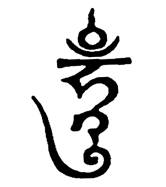
【Yamantaka Mantra :】
Root Mantra: 「Om。ya-ma-da-ka。hum-pei。」
Heart Mantra:「Om。chu-li。ka-la-lu-pa。hum-kan。so-ha。」
Vajra Mantra: 「Om。ya-ma-da-ka。hum-pei。om。chu-li。ka-la-lu-pa。hum-kan。so-ha。」
【Yamantaka Dharmalakṣaṇa Brief Introduction】
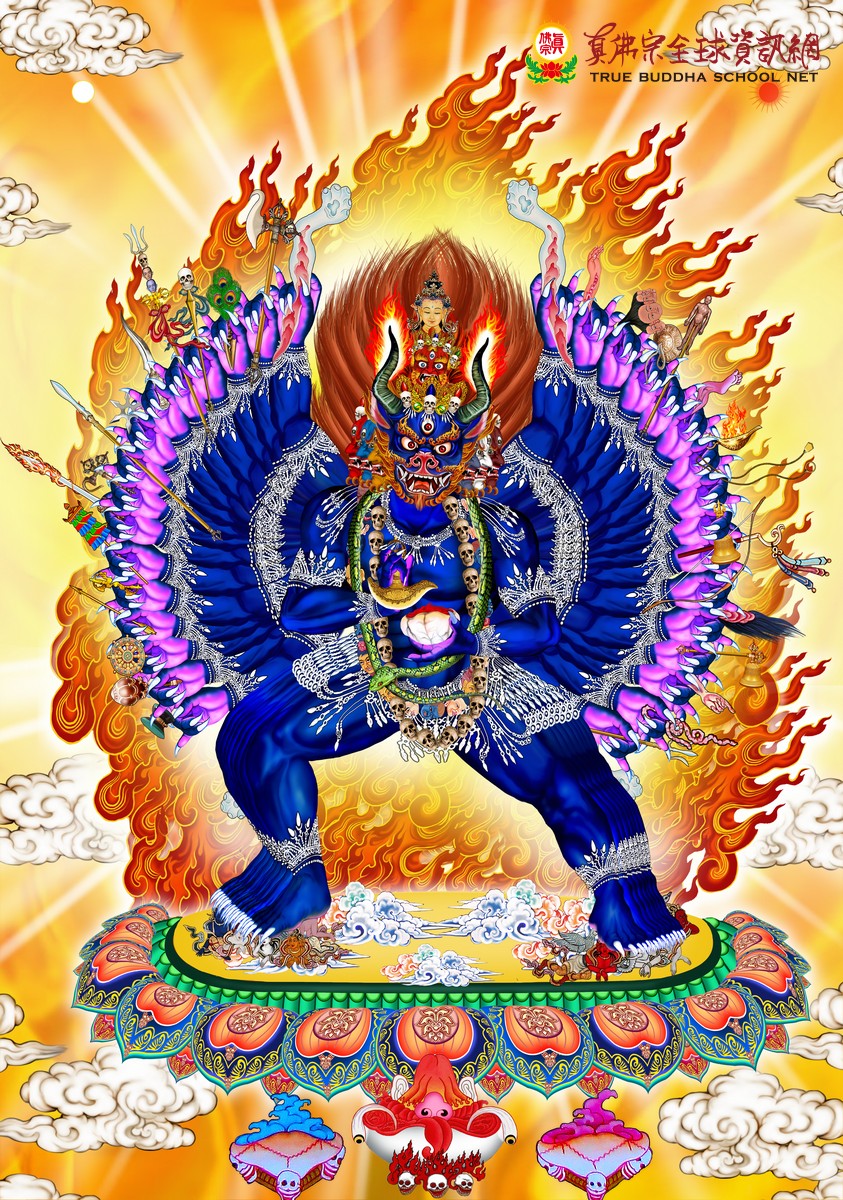 Yamantaka (Solitary Hero Yamantaka) has one face, two arms and two legs with the left leg straight and right leg bent. His right hand holds a battle axe while the left hand holds a kapala. His body is blue-black in color. His fiery hair stands straight up and his expression is wrathful. He stands on a lotus flower with his legs in a forward lunging position.
Yamantaka (Solitary Hero Yamantaka) has one face, two arms and two legs with the left leg straight and right leg bent. His right hand holds a battle axe while the left hand holds a kapala. His body is blue-black in color. His fiery hair stands straight up and his expression is wrathful. He stands on a lotus flower with his legs in a forward lunging position.Yamantaka is also depicted with six faces, six arms, six legs, and riding on a green water buffalo. He may also be depicted with nine faces, 34 arms, and 16 legs. When Yamantaka is depicted with 32 faces and 36 arms he is called the 13-Deity Yamantaka.
【Living Buddha Lian-sheng Sheng-yen Lu Dharma talk - Yamantaka Background and Dharma Benefits of Yamantaka Cultivation】
Yamantaka, also called Dorje Jigje, is Amitabha's wheel of injunction. He is one of the five major vajra protectors transformed from the Five Buddhas.
Yamantaka, also called Vajrabhairava or Wei De Vajra, is the emanation of Manjushri Bodhisattva. His Sanskrit name is Yamantaka which means ''vanquishing all evils.'' His other names include Overcoming Death, Yamantaka Wrathful King, Subduer of Yama, etc. In the Womb Mandala, this deity is located in the Hall of the Wisdom Kings to the left of the Prajna Bodhisattva.
Regarding the background of Yamantaka, according to the legends of Tibet, a devil king named Yamaraja, who had a human body and a buffalo head with horns, appeared and harmed many people. Manjushri Bodhisattva entered the samadhi of Yamaraja and transformed into Yamantaka with also a human body and a buffalo head. Yamantaka then subjugated Yamaraja. Yamantaka is therefore also called "Subduer of Yama.'' Yamantaka's mantra is ''Om。chu-li。ka-la-lu-pa。hum-kan。so-ha。''
His mantra can also be ''Om。chu-li。ka-la-lu-pa。hum-kan。so-ha。 om。ya-ma-da-ka。 hum-pei。''
One may also add the mantra ''Om。 ah-la-ba-zha-na-di。'' in front of ''Om。chu-li。ka-la-lu-pa。hum-kan。so-ha。 om。ya-ma-da-ka。hum-pei。'' This succession of mantras represents the series of events commencing with Manjushri Bodhisattva transforming into Yamantaka and ending with his defeat of Yamaraja.
Yamantaka has the so-called 13-Deity Yamantaka Shrine. His power is truly magnificent. The nine faces of Yamantaka represent nine Mahayana sutras. His 34 arms plus the body, speech, and mind represent proficiency in the 37 factors of the path. His 16 legs represent complete comprehension of the 16 types of emptinesses. The wrathful vajra flames represent the compassion and purity of subjugation.
Yamantaka has a blue-black body. He is enormous and wrapped in flames. With his furiously wrathful appearance, he is able to destroy and subdue all demons and poisonous dragons. He is capable of eradicating all obstructions and terrifying all demons. Yamantaka's command carries tremendous power to perform purification, enhancement, harmonization and subjugation. It can also subdue the four maras, Devaputra mara, Skanda mara, Klesa mara, and Mrtyu mara. Yamantaka's power and virtue are therefore equal to that of a buddha.
One who intends to cultivate the Yamantaka Practice should first cultivate Manjushri Practice. This is because Manjushri Bodhisattva is the root of Yamantaka. Manjusri's one mind with two emanations enables one to accomplish the Yamantaka Practice more easily. Mastering in Manjushri Practice is like establishing the root. With the root established, the path flourishes and one naturally develops strong affinity with Yamantaka. One can then practice the vajra sadhana and quickly attain spiritual union with Yamantaka.
Also, to cultivate the Yamantaka Sadhana, one must learn the Turning Method. To perform the Turning Method, one forms the Yamantaka Wheel of Injunction Mudra, stands straight on the right leg, then lifts and rotates the bent left leg while transforming from angry mind to wrathful appearance. There is immeasurable merit in this practice. Those with hatred and desire for revenge will be unable to harm the practitioner, and all ghosts and gods will obey the practitioner's commands.
The purpose of engaging in vajra practices is to subjugate devils and evil spirits and to protect one from harm by evil persons. Demons are especially fearful of the great power of the Yamantaka Practice. The power and injunction of Yamantaka are foremost among all the vajra practices. Since whoever cultivates this practice will attain Buddhahood, the Yamantaka Practice is the highest practice of the Gelug School. Yamantaka was the Dharma protector of Tsongkhapa, the patriarch of the Gelug School. He is also the principal Dharma protector of Living Buddha Lian-sheng Sheng-yen Lu of the True Buddha School.
【The Precious Lineage of True Buddha School Living Buddha Lian-sheng Sheng-yen Lu's Yamantaka Practice】
The precious lineage of True Buddha School's Yamantaka Practice: Thubten Nyima - Thubten Dali - Thubten Dargye - Thubten Qimo. Thubten Qimo is Dharma King Living Buddha Lian-sheng Sheng-yen Lu.
Living Buddha Lian-sheng Sheng-yen Lu's Yamantaka Sadhana originated from Patriarch Thubten Nyima.
(For Living Buddha Lian-sheng Sheng-yen Lu's personal transmission of the Yamantaka Uncommon Practice, please reference Sheng-yen Lu corpus Book 114, Vajrayana Karma Practices.)
【All cultivators should respect and comply with the True Buddha School Yamantaka Sadhana special notes as follows:】
- Of the four elements of earth, water, fire and wind, Yamantaka is transformed from the wind element and is also transformed from the ''yang'' syllable of the three syllable mantra ''rang, yang, kang.'' Therefore, if one has the surname ''Yang,'' one may receive the empowerment and listen to the Dharma talk but may not practice the Yamantaka Sadhana.
- When practicing Yamantaka Sadhana, cultivators must strictly adhere to the precepts. If one has seriously violated the monastic discipline or the five precepts, one may not practice the Yamantaka Sadhana until one has performed repentance by reciting the Vajrasattva Hundred Syllable Mantra 21 times. One may resume the Yamantaka Practice when one has received auspicious signs from one's repentance.
- A practitioner of the Yamantaka sadhana must have the highest moral integrity and observe the samaya vow.
'Buddha Light of Yamantaka', Chapter 35 of Book 116, The Yellow River
!!Please be aware that before engaging in any True Buddha Vajrayana practices, one must first take refuge and receive the respective empowerment.!!
⓪Please check the True Buddha School website regularly for the latest news about Living Buddha Lian-sheng and "be with Buddha" always.
Welcome to download the user-friendly True Buddha Video App from Appstore or Google Play. With the app you can see more of Grandmaster's marvelous videos and live webcasts. It is the speediest vehicle to "keep you synchronized and be with the Buddha!"
Official True Buddha School Net (TBSN):
Home page: http://tbsn.org/
Indonesia Home Page: http://tbsn.org/indonesia/
Official Facebook Pages:
Chinese: https://www.facebook.com/syltbsn
English: https://www.facebook.com/syltbsnenglish
Indonesia: https://www.facebook.com/syltbsnindonesia
⓪Welcome fans (Vajra Dharma Protectors) of the Official English True Buddha Facebook site to invite their friends to join the Fan Club. Better yet, click "Like" and "Share". Let us together spread the name of Dharma King Living Buddha Lian-sheng to every corner of the world!!

